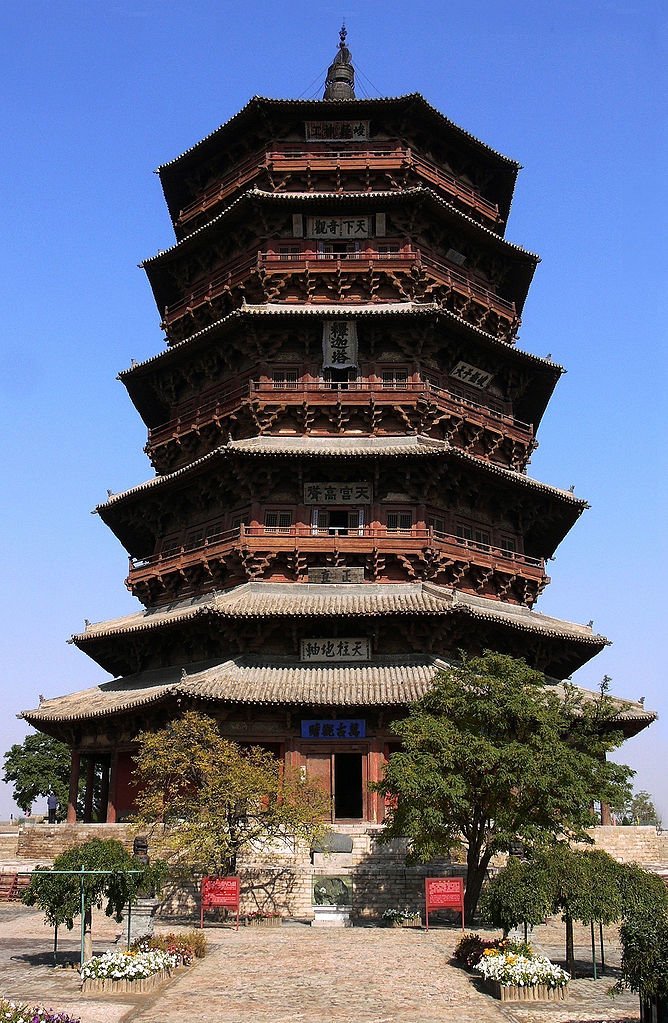A few weeks ago we had a blast from the past and looked at the Mayan Ruins in Mexico and South America. This week, we’re heading east (way east!) and checking out the history of the world-famous Pagoda of Fogong Temple.
Similar to other historical buildings and landmarks, the Pagoda of Fogong Temple is easily recognized, although many may not know the official name.
Looks familiar, right? It’s been used as a backdrop for many films over the years, and is now on China’s tentative list for UNESCO World Heritage Site consideration. Anyway, enough about the present – let’s talk about the history!
The temple, like most temples in China, was built for Buddha and you can still see the statute of Buddha there today, even though the temple is more of a tourist attraction than a religious site.
But more impressive than its beauty is its durability. The 220.83 ft. tall temple was built almost 2000 years ago (yes, you read that right) in 1056, and is made of wood. It has survived several earthquakes and other natural disasters, which is a miracle in itself – it has also been nicknamed Muta, which means Timber Pagoda. There are a few reasons why it might be so resistant – perhaps the octagon shape and the 4.4 meter solid base have something to do with it.
Thanks to its awe-striking durability, it is the oldest wooden, still-standing pagoda in China – but not the oldest existent pagoda (Songyue Pagoda – made of brick), or the oldest wooden buildings (the Buddhist temple halls at Mount Wutai).
What historical building would you like for us to write about next? Let us know below or on Twitter!


